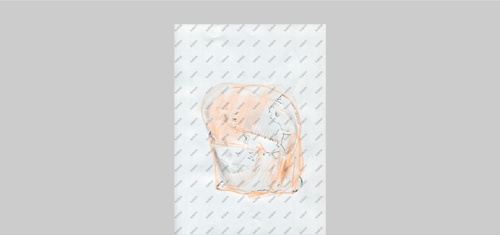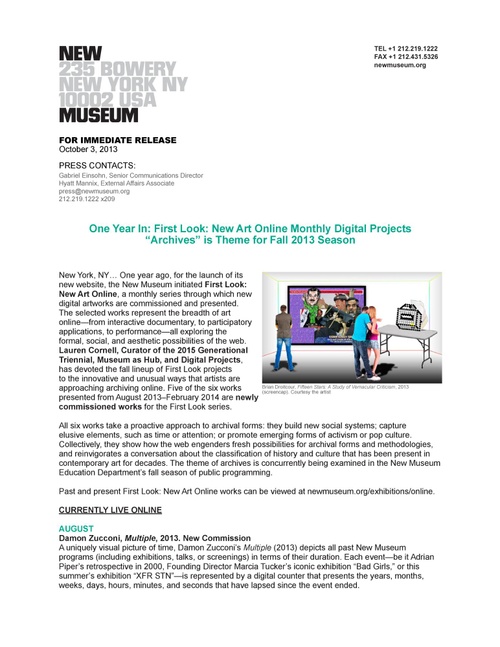Harm Van Den Dorpel: Dissociations
Harm Van Den Dorpel: Dissociations
How can an artist’s work be represented online? In 2013, as part of the New Museum’s First Look online exhibition series, the artist Harm van den Dorpel looked directly at this question through Dissociations, a deeply studied and spontaneous view of his process. The website—a concatenation of references, influences, and artworks, made, un-made, or imagined—gives his studio practice, along with its iterative and aggregative rhythms, a visual form.
The structure of Dissociations is a successive presentation of finite objects in favor of tracking an interval space, where the interrelationships between ideas and forms become the focus rather than the works themselves. Its index is determined by the whims of its underlying system, which van den Dorpel says help him make fresh connections between much worked-over material. He writes that the system is being trained by his use of it to “gradually make better or more informed estimations on what could belong together, and what not.”
Dissociations can trace its roots to Aby M. Warburg’s Mnemosyne Atlas (1924–29), a library of books, artworks, newspaper clippings, and found objects that was governed, in Warburg’s words, by an “iconology of intervals”—an obsessive dedication to the potential new knowledge that could be sparked by interconnections between ostensibly disparate things. The historian Elisabeth Doove has written in Exploring the Curatorial as Creative Act – Part I Hidden Similarities (Plymouth University Press, 2011) that “Warburg’s non-linear and non-chronological approach seems almost to be a precursor of the cybernetic approach.”
This is a fitting context for van den Dorpel who once described his finished works “as debris of an ongoing activity” and points to new possibilities for seeing art online. Dissociations allows us to see an artist at work: the formal refrains and forward steps he has taken, the different techniques he has learned, the sources of inspiration that fade in and out of mind.
Established in 2012 and co-organized by the New Museum and Rhizome, First Look is a digital art commissioning and exhibition program representing the breadth of art online—from interactive documentary, to custom-built participatory applications, to moving image-based works, and art for mobile VR. Encompassing a substantial array of work that continues to expand, First Look explores the formal, social, and aesthetic possibilities of emerging technologies on the web.

